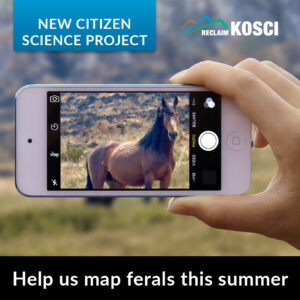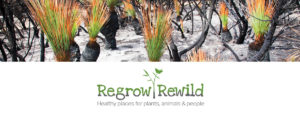Summer of 2019-2020 has been characterised by extreme weather in particular catastrophic bushfires and more recently rain and flooding events. Volunteers are needed to help local wildlife and bushland to recover from fires, floods and other climate change related events. Volunteering benefits both your physical and mental health and enables you to contribute positively to your community. To point you in the right direction below is a list of current nature conservation volunteering opportunities.
Regrow, Rewild – National Parks Association of NSW
The National Parks Association of NSW is looking for volunteers for future projects to assist in the recovery of national parks, communities and native species impacted by bushfires. Express your interest here.
Bushcare and Landcare
Bushcare and Landcare Volunteering is another way that you can contribute to the recovery of parks and other bushlands. Bushcare groups are often part of a local Council or National Parks & Wildlife Service program and may be provided with help such as supervision, tools and training. Landcare groups are mostly in rural areas, however there are also many in metropolitan areas.
Birdlife Discovery Centre Sydney
The Birdlife Discovery Centre at Homebush Bay in Sydney is looking for volunteers who enjoy bird watching, conservation and promoting awareness of bird conservation. For more information on this and other bird conservation volunteering opportunities click here or contact Debbie Harris at daisyproctor@yahoo.co.uk
Conservation Volunteers Australia
Conservation Volunteers Australia provides a range of opportunities for people with a passion for nature and conservation to get involved both locally and across Australia. Bushfire recovery projects are a current focus for conservation volunteers.
NSW National Parks and Wildlife Service
NSW National Parks and Wildlife Service (NPWS) has volunteering opportunities available. If you would like to contribute to the protection of the environment and meet other like-minded people click on this link to explore volunteering positions at NPWS.
iNaturalist Environment Recovery Project
The Environment Recovery Project is asking participants to record and upload their observations in areas of burnt bushland. Findings will be used to assist understanding of how species recover from the 2019‑2020 bushfire season.
Other nature volunteering opportunities
The Department of Planning, Industry and Environment has a range of volunteering opportunities in conservation, animal care, gardens and national parks. Click here for more information and to apply.
Seek Volunteer
The Seek Volunteer database is one of the largest in Australia and allows you to explore volunteer opportunities according to location and area of interest.
Birdata – Birdlife Australia
Birdata is a national bird monitoring program run by Birdlife Australia that you can contribute to. Visit the birdata website for information on how to get involved.
BirdLife Photography: Exciting opportunities exist for you to join this special interest group’s committee! Click here for more information.
National Office Volunteer Opportunities: BirdLife Australia E-Store pick and packer – email store@birdlife.org.au for further information
Birds on Farms (NSW): A regular surveying program is being established now. If you are interested in being a volunteer birdwatcher, click here for more information.
Re-aging the temperate woodlands of Central West NSW: Activities include habitat restoration, bird monitoring/watching, and engagement with schools and the general community. Click here for more information.
The Beach-nesting Birds program is always looking for new volunteers as our birds of focus are widely spread across an immense coastline and the threats facing them are as voluminous as the ocean. To read more about the many volunteer roles available click here. Training and mentoring can be provided!
For more information on Beach-nesting Birds volunteering, including where volunteers are most needed click here.
World Migratory Bird Day is coming up on Saturday May 9th! More information can be found by clicking here.
2020 dates for the National Migratory Shorebird program’s summer and winter shorebird counts are:
Summer Count: November 1st – February 29th (ideal date is January 15th)
Winter Count: May 15th – August 15th (ideal date is July 1st)


